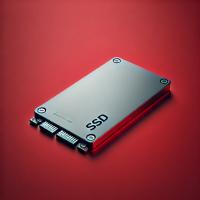SSD vs HDD: A Technical Comparison of Storage Technologies

In the realm of digital storage, two primary technologies dominate the landscape: Solid State Drives (SSDs) and Hard Disk Drives (HDDs). As technology evolves, the choice between SSDs and HDDs becomes increasingly crucial for consumers and businesses alike. This article delves into the technical aspects of both storage types, highlighting their best features, use cases, and some interesting facts to provide a comprehensive understanding for readers.
What Are SSDs and HDDs?
Hard Disk Drives (HDDs)
HDDs are the traditional storage devices that have been in use since the 1950s. They use magnetic storage to read and write data. Inside an HDD, a platter coated with a magnetic material spins at high speeds, while a read/write head moves across the platter to access or store data. Key features of HDDs include:
- Capacity: HDDs offer large storage capacities at relatively low costs. They are available in sizes ranging from 500GB to several terabytes (TB).
- Durability: While robust, HDDs are prone to mechanical failures due to moving parts.
- Performance: HDDs generally have slower read and write speeds, with an average of 100-200 MB/s, due to mechanical movement.
Solid State Drives (SSDs)
SSDs, on the other hand, are a newer technology that uses flash memory to store data. Unlike HDDs, SSDs have no moving parts, which significantly enhances their performance and durability. There are several types of SSDs, including SATA SSDs, M.2 SSDs, and NVMe SSDs. Key features of SSDs include:
- Speed: SSDs offer much faster read and write speeds than HDDs, with NVMe SSDs reaching up to 3500 MB/s or more.
- Reliability: With no moving parts, SSDs are more resistant to physical shock and less likely to fail mechanically.
- Form Factor: SSDs come in various form factors, including 2.5-inch, M.2, and U.2, making them versatile for different types of devices.
Types of SSDs
SATA SSDs
These are the most common SSDs, compatible with older SATA interfaces. They are an excellent choice for upgrading older systems but are limited to speeds of around 550 MB/s due to the SATA III interface's bandwidth cap.
NVMe SSDs
Non-Volatile Memory Express (NVMe) SSDs use the PCIe interface, offering significantly higher speeds than SATA SSDs. Key benefits of NVMe SSDs include reduced latency and improved data transfer rates, making them ideal for high-performance computing tasks.
M.2 SSDs
M.2 is a form factor that can support both SATA and NVMe protocols. M.2 SSDs are compact and can be used in laptops and desktops. They are ideal for systems where space is a premium.
Best Features and Use Cases
Speed and Performance
SSDs are the clear winner in terms of speed and performance. For tasks requiring quick access to data, such as operating systems, applications, and gaming, SSDs drastically reduce load times compared to HDDs. NVMe SSDs, in particular, are excellent for tasks involving large file transfers, video editing, and other data-intensive applications.
Reliability and Durability
SSDs generally offer better reliability because they lack moving parts, which reduces the risk of mechanical failure. This makes SSDs more suitable for portable devices like laptops and external drives that are more susceptible to physical damage.
Capacity and Cost
HDDs still lead in terms of capacity per dollar. They are an economical choice for storing large amounts of data where speed is not critical, such as backup storage, media archives, and server farms. However, the price gap between SSDs and HDDs is narrowing, making SSDs more accessible for everyday use.
Power Efficiency
SSDs consume less power than HDDs, which is particularly beneficial for laptops and other battery-operated devices. This efficiency contributes to longer battery life and less heat generation.
Form Factor and Versatility
SSDs come in various form factors, providing flexibility for different hardware configurations. M.2 and U.2 SSDs offer compact designs, making them suitable for ultrabooks and compact desktop systems.
Interesting Facts
- Lifespan: SSDs have a finite number of write cycles, but modern SSDs are equipped with wear-leveling algorithms that distribute writes evenly, significantly prolonging their lifespan. Most consumer SSDs can last several years under typical use conditions.
- Data Recovery: Data recovery from HDDs is generally more straightforward compared to SSDs due to the complexity of SSDs' data storage algorithms and the possibility of data encryption.
- Hybrid Drives: Some systems use hybrid drives (SSHDs), which combine a small amount of SSD storage with a traditional HDD. This setup offers a balance between performance and capacity but is generally less common due to the falling prices of SSDs.
Conclusion
In conclusion, the choice between SSDs and HDDs depends largely on the user's specific needs. For speed, reliability, and power efficiency, SSDs are the preferred choice, especially NVMe models for performance-oriented tasks. HDDs, on the other hand, remain valuable for large-capacity storage at a lower cost. As technology continues to advance, the gap between these two storage solutions narrows, making SSDs increasingly accessible for a broader range of applications. Understanding the strengths and limitations of each technology will help users make informed decisions tailored to their specific storage requirements.







